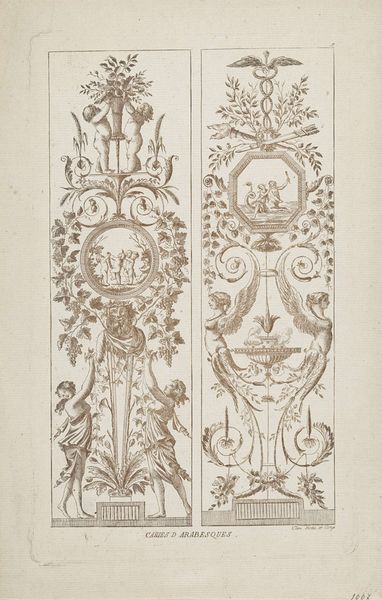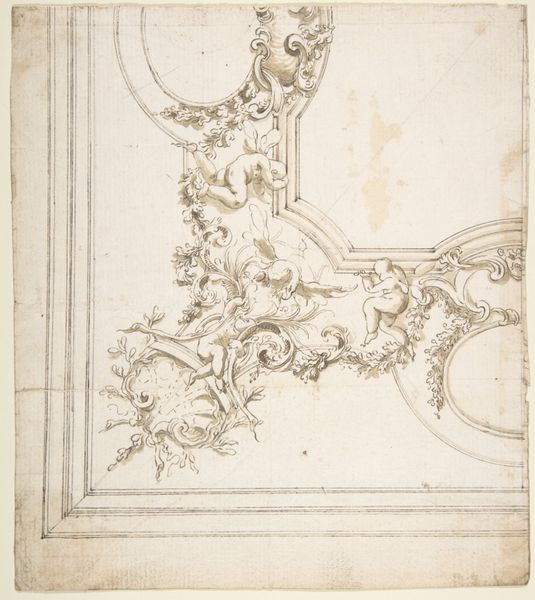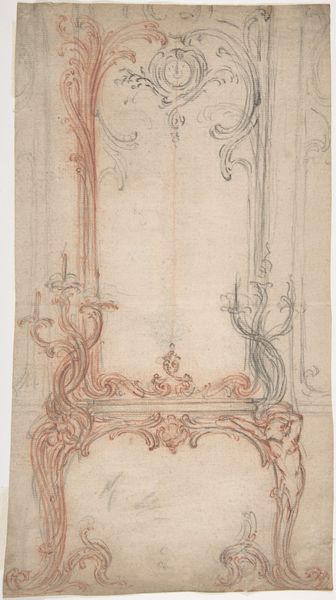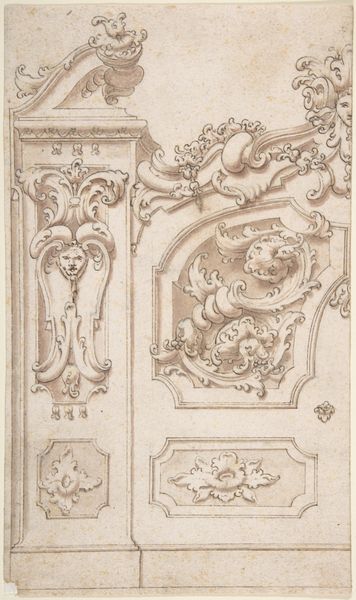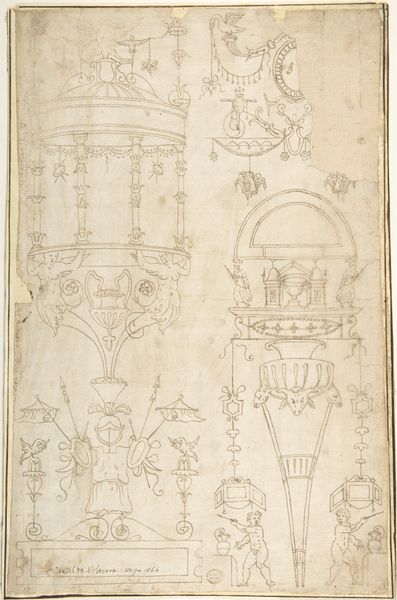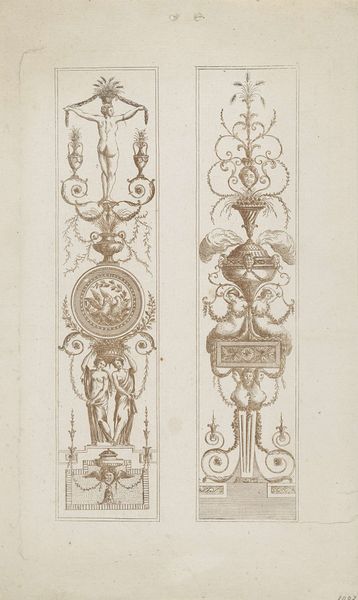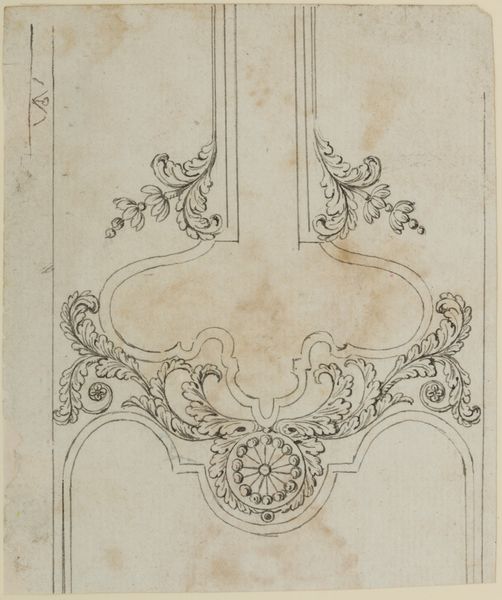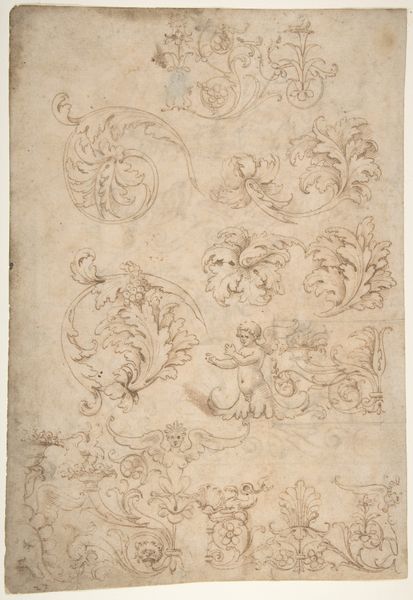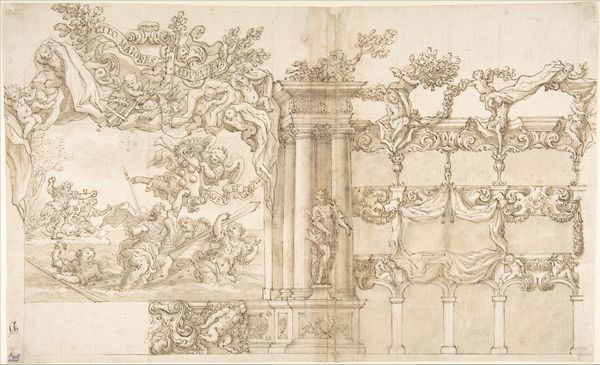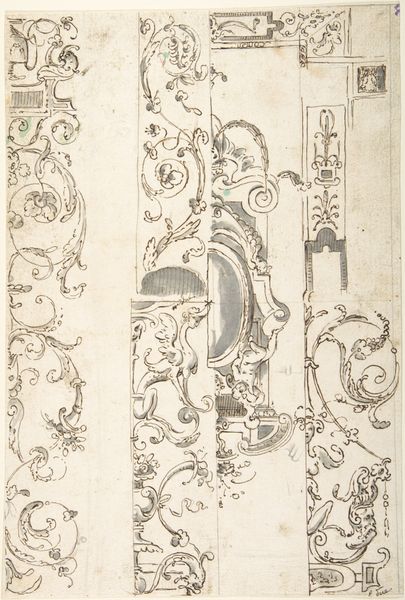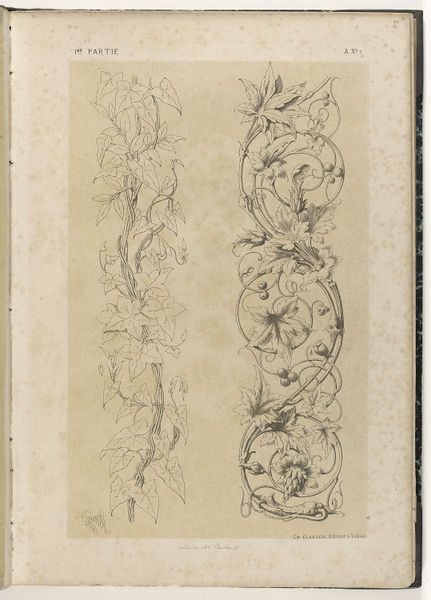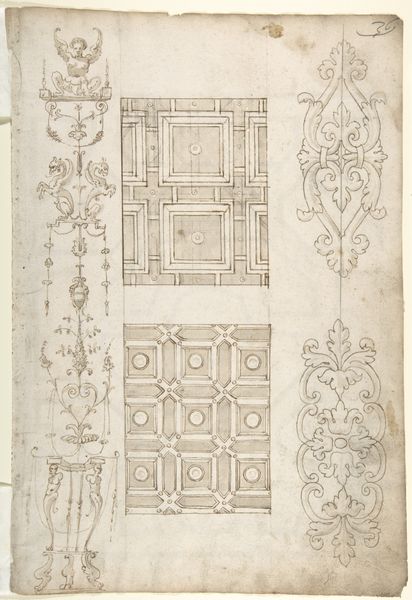
Studies for Coffee Urns, Arched-top Altars, and an Altar Project for the Baptistery of Florence Cathedral (Recto). Studies for Chapels and Portals (Verso). 1652 - 1725
0:00
0:00
drawing, print, pencil, architecture
#
architectural sketch
#
drawing
#
baroque
# print
#
pencil sketch
#
human-figures
#
figuration
#
pencil
#
history-painting
#
architecture
Dimensions: sheet: 11 5/8 x 8 3/16 in. (29.6 x 20.8 cm)
Copyright: Public Domain
Curator: Giovanni Battista Foggini’s "Studies for Coffee Urns, Arched-top Altars, and an Altar Project for the Baptistery of Florence Cathedral" is a fascinating look into the mind of a Baroque artist, likely created sometime between 1652 and 1725. The drawing, rendered in pencil, presents a sheet filled with possible designs, now residing at the Metropolitan Museum of Art. Editor: My immediate impression is one of structured fantasy. The detailed pencil work gives everything an ethereal quality, as if these altars and urns exist in a dream. I'm struck by how the objects depicted feel both monumental and intimate. Curator: The drawing provides incredible insight into Foggini’s design process. The presence of multiple studies for the same object, particularly the coffee urns and arched-top altars, showcases his meticulous approach to ornamentation and form within the Baroque style. Foggini held a prominent position in Florentine sculpture during the late 17th and early 18th centuries, so the potential public role of these altars is significant. Editor: Considering the period and the references to religious architecture, it is difficult to ignore the connection to the Counter-Reformation and the use of art to inspire religious fervor. It makes you wonder what socioeconomic factors allowed him to dream up all those ideas without ever making any of them real. How many patrons were consulted during that period? Curator: It’s an interesting point. The inclusion of the altar project specifically designed for the Florence Baptistery suggests Foggini was aiming for a high profile commission, likely hoping for Medici patronage. Though none of these designs appear to have been realized precisely as drawn here, these kinds of preliminary sketches were crucial to negotiate aesthetic values between artist and patron. Editor: I see the artist actively working within—or perhaps subtly pushing against—the constraints of his social environment. Each sketch represents a dialogue with power and tradition. You’re trying to appease the person who will pay your bills, and yet this exercise gives freedom of imagination, and agency. It would be intriguing to dig deeper into how these design processes affected Foggini’s sense of identity. Curator: Absolutely. It is compelling to witness the confluence of artistic vision, social context, and institutional forces shaping artistic creation during the Baroque era. Editor: I agree. Viewing it through an intersectional lens enriches our understanding of artistic legacy and agency, and helps to contextualize art history.
Comments
No comments
Be the first to comment and join the conversation on the ultimate creative platform.


